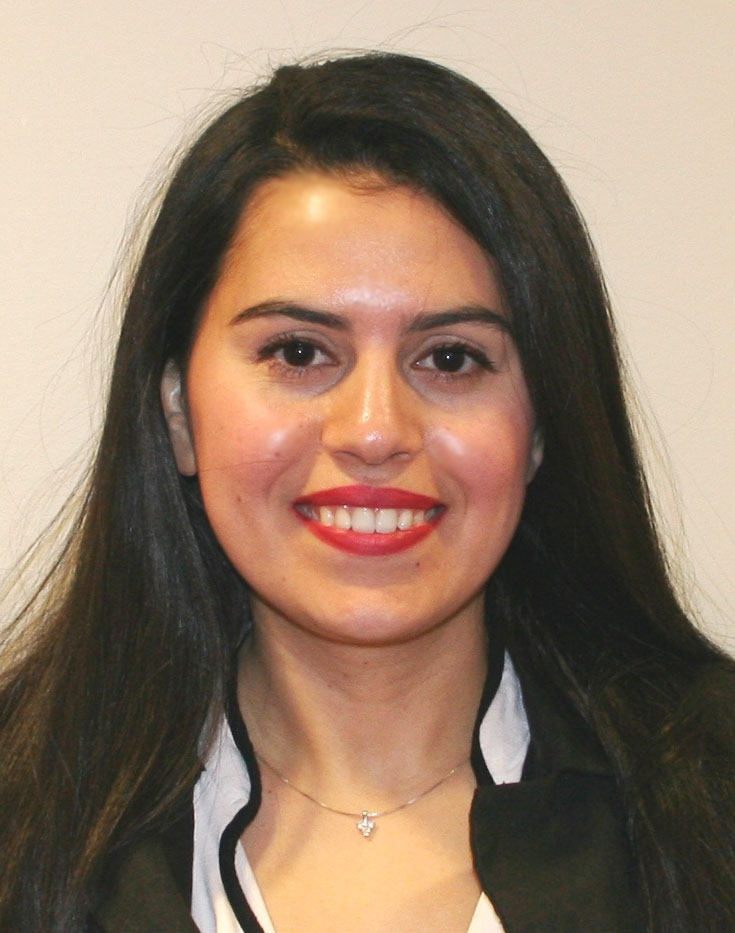
PROVIDENCE, R.I. [Brown University] — Golareh Agha probably could have picked a more rarefied topic than risk factors of cardiovascular disease for her dissertation. It’s not exactly unexplored territory where all the big discoveries are yet to be made. But Agha wanted to do work with direct relevance. Her goal was, and remains, to help people live a healthy life.
Take, for example, the second of her three chapters: a study of whether the household socioeconomic status of people while they were in utero could affect gene expression, and further increase their risk of obesity.
To find out Agha collected blood and fat tissue samples from more than 100 middle-aged people whose families have volunteered in the decades-long New England Family Study.
Agha and a team, including adviser Eric Loucks, assistant professor of epidemiology, pored over chemical differences in the DNA of the participants, called methylation, that affect gene expression. She then asked whether those who had such differences also had low household socioeconomic status (education, income, and occupations of the parents) as a fetus.
For women, the association was significant. Those with low socioeconomic status while gestating — but not necessarily during adulthood — were more likely to have such “epigenetic” changes evident in their fat that are biologically connected to obesity. (Chapter 3 showed that epigenetic changes predictive of obesity in the subjects were more readily evident in fat tissue than in blood.)
The research won a Trudy Bush Fellowship Award at an American Heart Association meeting in March. But to Agha, the finding — that prenatal socioeconomic status may uniquely contribute to adult obesity — is not just a scientific achievement. It’s also a prompt to consider public health action.
“If you show that biologically this period is really important, you can have sustainable and feasible interventions,” she said. “Even though it may be deemed difficult or even impossible to intervene on socioeconomic disparity across someone’s life, pregnancy is an important and defined time window that can more easily be intervened in. This can mitigate a lifetime of risk in the child.”
Lifestyle risks
The period later in life is the subject of Agha’s first chapter, where she looked at whether lifestyle – diet, smoking, physical activity and body-mass index – of tens of thousands of post-menopausal women in the Women’s Health Initiative Observational Study predicted their risk of heart failure. Lifestyle and cardiovascular disease is well-worn territory, but heart failure is relatively understudied, especially in women and minorities.
While Agha’s topline result was unsurprising – an unhealthy lifestyle and high BMI predict a clear elevated risk of heart failure for all kinds of women – her study yielded deeper insights. One was that women faced about the same elevated risks of heart failure from an unhealthy lifestyle, regardless of whether they already had overt signs of cardiovascular trouble. The other was that it did no good to tease out one factor or another — such as smoking or diet — in lowering the risk. Prevention was a package deal of eating right, exercising, staying away from tobacco, and keeping fit.
In other words, helping people avoid cardiovascular diseases is a matter of understanding that prevention begins before birth and continues throughout life, sometimes involving factors that only society, rather than the individual, can control.
“My whole thesis was motivated by a life course perspective to health and disease, which suggests that harmful exposures, beginning at conception and acting through the life course, can individually, interactively, and collectively contribute to disease that manifests later on in life,” Agha said.
To Brown and beyond
Agha’s own academic “life course” began at the University of Toronto where she studied genetics and anthropology as an undergraduate. For masters work she went to McGill University in Montreal. There she met Loucks, whose research focuses on the nexus of physiology and social determinants of cardiovascular disease.
When Loucks came to Brown in 2009, Agha decided to apply too.
“I looked at the program at Brown and the kind of school it is,” she said. “There was such a rich array of people working in a lot of topics I was interested in.”
In her research, she also worked closely with professors Stephen Buka, Dr. Charles Eaton, Karl Kelsey, E. Andres Houseman, and Dominique Michaud.
She defended her research in November and shortly afterward got a job as a postdoctoral scholar in the Harvard School of Public Health. She’s working with Andrea Baccarelli, a leading scholar in environmental epigenomics.
There she’ll continue to discover new strategies for preventing disease by learning how it occurs in the first place.
